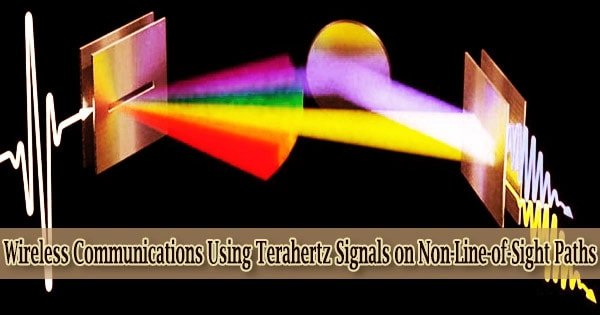How does a base station in a local area network determine which direction to deliver the beam if it chooses to utilize a directional beam rather than a wide area network broadcast to convey a signal to a user wanting to connect to the network?
A link discovery technique was created in 2020 by researchers from Brown University and Rice University employing terahertz radiation, which has high-frequency waves above 100 gigahertz.
In order to focus on the more straightforward scenario where the only path that existed was along the line-of-sight (LOS), they deferred the question of what would occur if a wall or other adjacent reflector created a non-line-of-sight (NLOS) path from the base station to the receiver.
The same researchers address this issue in APL Photonics from AIP Publishing by taking into account two different generic types of transmitters and investigating how their properties might be utilized to evaluate whether an NLOS path contributes to the signal received by the receiver.
“One type of transmitter sends all frequencies more or less in the same direction,” said Daniel Mittleman, co-author and an engineering professor at Brown, “while the other type sends different frequencies in different directions, exhibiting strong angular dispersion. The situation is quite different in these two different cases.”
For most realistic indoor scenarios we can envision for an above-100 gigahertz wireless network, the issue of NLOS path is definitely going to require careful consideration. We need to know how to exploit these link opportunities to maintain connectivity.
Daniel Mittleman
According to the researchers’ findings, the transmitter that sends various frequencies in various directions has a noticeable edge when it comes to identifying NLOS paths and telling them apart from LOS paths.
“A well-designed receiver would be able to detect both frequencies and use their properties to recognize the two paths and tell them apart,” Mittleman said.
The use of terahertz transmissions for wireless communications has a number of problems, which have been the subject of numerous recent papers in academic literature. In fact, the phrase “6G” has gained popularity to refer to next wireless system generations that employ these ultrahigh-frequency signals.
“For terahertz signals to be used for wireless communications, many challenges must be overcome, and one of the biggest is how to detect and exploit NLOS paths,” said Mittleman.
This research is among the first to offer a quantitative analysis of how to find and use NLOS pathways and a comparison of the actions of various transmitters in this setting.
“For most realistic indoor scenarios we can envision for an above-100 gigahertz wireless network, the issue of NLOS path is definitely going to require careful consideration,” said Mittleman. “We need to know how to exploit these link opportunities to maintain connectivity.”
The link between the base station and receiver can be kept up by using an NLOS path, for instance, if the LOS path is obstructed by something.
“Interestingly, with a transmitter creating strong angular dispersion, sometimes an NLOS link can provide even faster connectivity than the LOS link,” said Yasaman Ghasempour, co-author and assistant professor at Rice University. “But you can’t take advantage of such opportunities if you don’t know the NLOS path exists or how to find it.”















